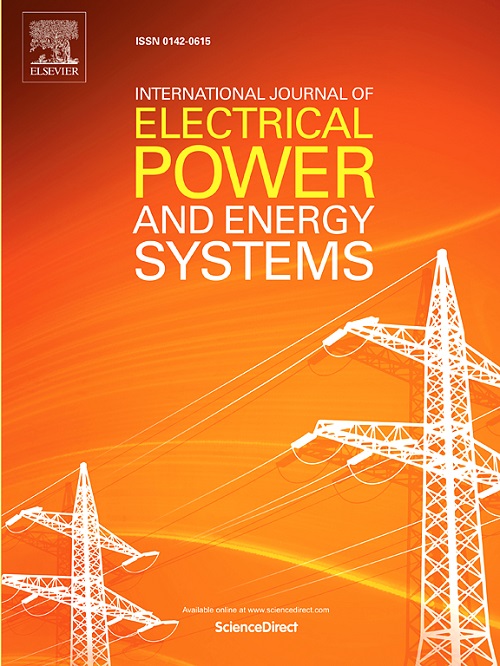HVDC converter simulation model with turn-off characteristics of series thyristors
IF 5
2区 工程技术
Q1 ENGINEERING, ELECTRICAL & ELECTRONIC
International Journal of Electrical Power & Energy Systems
Pub Date : 2025-03-21
DOI:10.1016/j.ijepes.2025.110620
引用次数: 0
Abstract
The converter models in common electromagnetic transient simulation software cannot reflect the dynamic turn-off process and the dispersity of series thyristors, which leads to inaccurate judgment and simulation of the commutation failure (CF). To characterize the turn-off process of the thyristor precisely from the micro-physical mechanism, the dynamic dissipation characteristics of charge carriers during the turn-off process are analyzed. The current zero-crossing rate, forward current, and junction temperature are extracted as the key influence factors of turn-off characteristics. Then, based on the analysis of the difference in the dynamic dissipation characteristics of charge carriers, a novel nonlinear segmentation mathematical model describing the turn-off process of thyristor is proposed. Considering the dispersity of the reverse recovery charge between series thyristors, a converter model with turn-off characteristics of series thyristors is proposed. The experiment results from the thyristor test platform and the LCC experiment platform verify the accuracy of the proposed thyristor and converter models separately. The simulation errors of peak turn-off current, reverse recovery charge, and turn-off time are less than 5%. Under the single-phase and three-phase short-circuit ground faults, the proposed converter model can judge the CF and simulate the characteristics of the CF more accurately.
具有串联晶闸管关断特性的高压直流变换器仿真模型
普通电磁瞬态仿真软件中的变流器模型无法反映串联晶闸管的动态关断过程和分散性,导致对换向故障(CF)的判断和仿真不准确。为了从微观物理机制上精确描述晶闸管的关断过程,本文分析了关断过程中电荷载流子的动态耗散特性。提取出电流过零率、正向电流和结温作为关断特性的关键影响因素。然后,基于对电荷载流子动态耗散特性差异的分析,提出了一种描述晶闸管关断过程的新型非线性分段数学模型。考虑到串联晶闸管之间反向恢复电荷的分散性,提出了具有串联晶闸管关断特性的转换器模型。晶闸管测试平台和 LCC 实验平台的实验结果分别验证了所提出的晶闸管和变流器模型的准确性。峰值关断电流、反向恢复电荷和关断时间的仿真误差均小于 5%。在单相和三相短路接地故障情况下,所提出的变流器模型能更准确地判断 CF 并模拟 CF 的特性。
本文章由计算机程序翻译,如有差异,请以英文原文为准。
求助全文
约1分钟内获得全文
求助全文
来源期刊
CiteScore
12.10
自引率
17.30%
发文量
1022
审稿时长
51 days
期刊介绍:
The journal covers theoretical developments in electrical power and energy systems and their applications. The coverage embraces: generation and network planning; reliability; long and short term operation; expert systems; neural networks; object oriented systems; system control centres; database and information systems; stock and parameter estimation; system security and adequacy; network theory, modelling and computation; small and large system dynamics; dynamic model identification; on-line control including load and switching control; protection; distribution systems; energy economics; impact of non-conventional systems; and man-machine interfaces.
As well as original research papers, the journal publishes short contributions, book reviews and conference reports. All papers are peer-reviewed by at least two referees.

 求助内容:
求助内容: 应助结果提醒方式:
应助结果提醒方式:


